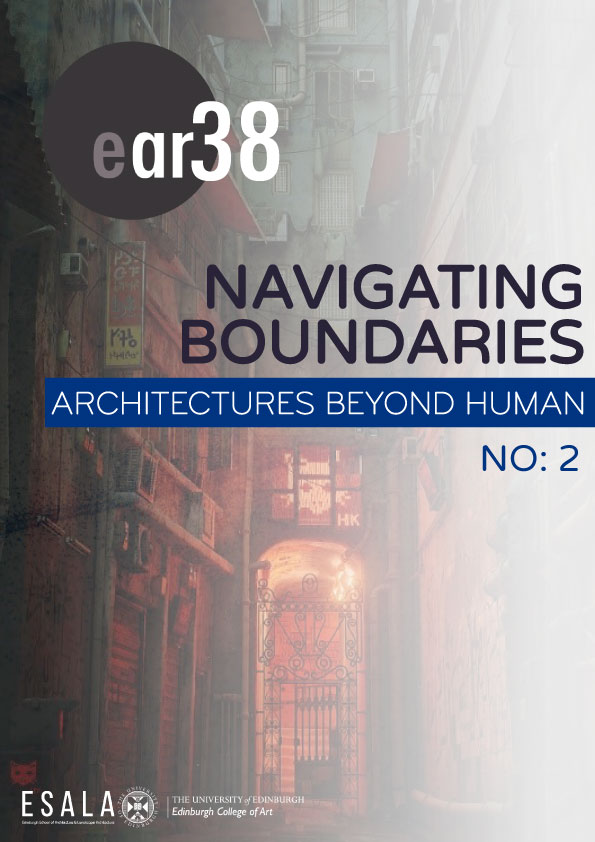Edinburgh Architecture Research (EAR) is a non-profit, peer-reviewed, open-access, academic journal exploring the built environment and its overlap with numerous fields of arts, humanities and social sciences from but not limited to an architectural standpoint. We invite submissions in the form of articles, essays, field reports (WIP) or book reviews. EAR also encourages the presentation of research in alternative forms such as film, audio and photo essays.
Announcements
Current Issue

The second issue of EAR38 delves deeply into the virtual environment, exploring its impact on spatial perception and construction. The contributions within this issue examine how technological advancements are used to create both physical and virtual spaces, as well as the behaviours demonstrated by both humans and non-humans within these immaterial environments. Through a critical review of the videogame Stray (about the adventures of a cat and its flying robot companion), Hamid Amouzad Khalili and Rui Ma explore non-human spatial storytelling across urban, architectural and interior scales, as well as character interaction challenges. Supported by comments from an interview with one of the game’s developers and by detailed analytical drawings, the article explores videogame placemaking and the spatial design of fetch quests. Conceptualising Gaudí’s La Sagrada Familia as posthuman, Jaya Sarkar’s article steps away from traditional perceptions of design and agency as a step towards an embodied and entangled architecture of the famous basilica. The author explores how posthumanism enables new design methods to integrate with the cathedral's original ideas and addresses the process of materialising its architectural concepts amidst technological advancements, emphasising future sustainability and a pluralistic, hopeful architectural vision.




